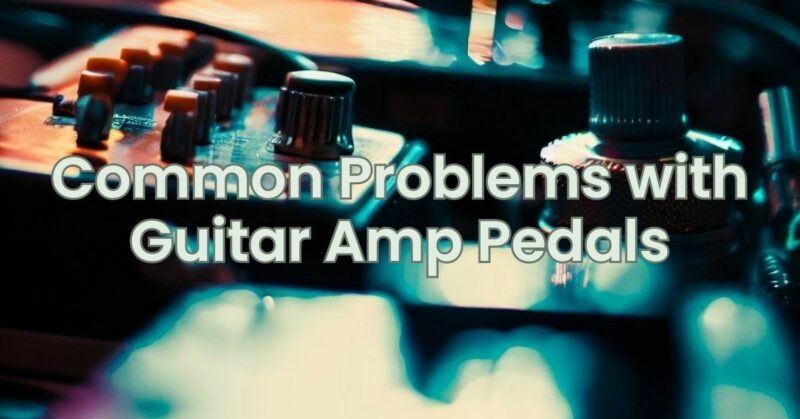Guitar amp pedals are fantastic tools for shaping your guitar’s tone and adding unique effects. However, like any electronic device, they can occasionally encounter issues that affect their performance. In this article, we will discuss some common problems you may encounter with guitar amp pedals and provide troubleshooting tips to help you resolve these issues.
- No Power or Signal: One common problem is when a pedal fails to power on or produces no sound. First, check the power source and connections. Ensure that the power supply is functioning correctly and that all cables are securely plugged in. If using batteries, confirm they have enough charge. Additionally, check the input and output jacks for loose connections or debris that may be obstructing the signal flow.
- Pedal Noise or Hum: If you notice excessive noise, hum, or unwanted feedback when using a pedal, there are several potential causes. Ensure that your power supply is isolated and properly grounded to minimize electrical interference. Use high-quality cables to minimize signal loss and noise pickup. Experiment with pedal placement and positioning to reduce potential interference from other electronic devices or power sources.
- Clicks or Pops: Clicking or popping sounds can be caused by various factors. First, check the pedal’s footswitch to ensure it is functioning properly and not sticking. Cleaning the footswitch contacts with contact cleaner may help. Additionally, verify that all cables are secure and free from damage. If the issue persists, it may be necessary to have the pedal inspected and repaired by a professional.
- Pedal Not Engaging or Disengaging: Sometimes, a pedal may fail to engage or disengage as expected. This issue often stems from a faulty switch or wiring. Check the pedal’s footswitch for any physical damage or debris that may be obstructing its operation. If the issue persists, it may require repair or switch replacement.
- Signal Loss or Weak Output: If a pedal is causing a noticeable drop in volume or a weakened signal, there could be a few potential causes. Check the pedal’s level or output settings and adjust them accordingly. Ensure that the pedal is receiving adequate power and that the battery (if used) is fresh or the power supply is supplying the correct voltage. Faulty components or damaged internal wiring may also contribute to signal loss, requiring professional repair.
- Intermittent or Scratchy Potentiometers: Potentiometers, or “pots,” are the knobs or controls on a pedal. Over time, they can develop issues such as scratchiness or intermittency. If you experience these problems, try rotating the potentiometers back and forth multiple times to clean their contacts. If the issue persists, consider using contact cleaner specifically designed for electronics. In more severe cases, replacing the potentiometers may be necessary.
While guitar amp pedals are generally reliable, they can encounter occasional problems. By understanding common issues and following troubleshooting steps, you can often resolve these problems on your own. Remember to check power sources, connections, and clean contacts regularly. If the problem persists or requires technical expertise, don’t hesitate to seek professional assistance. With proper care and maintenance, your guitar amp pedals will continue to provide you with the desired effects and enhance your playing experience for years to come.


